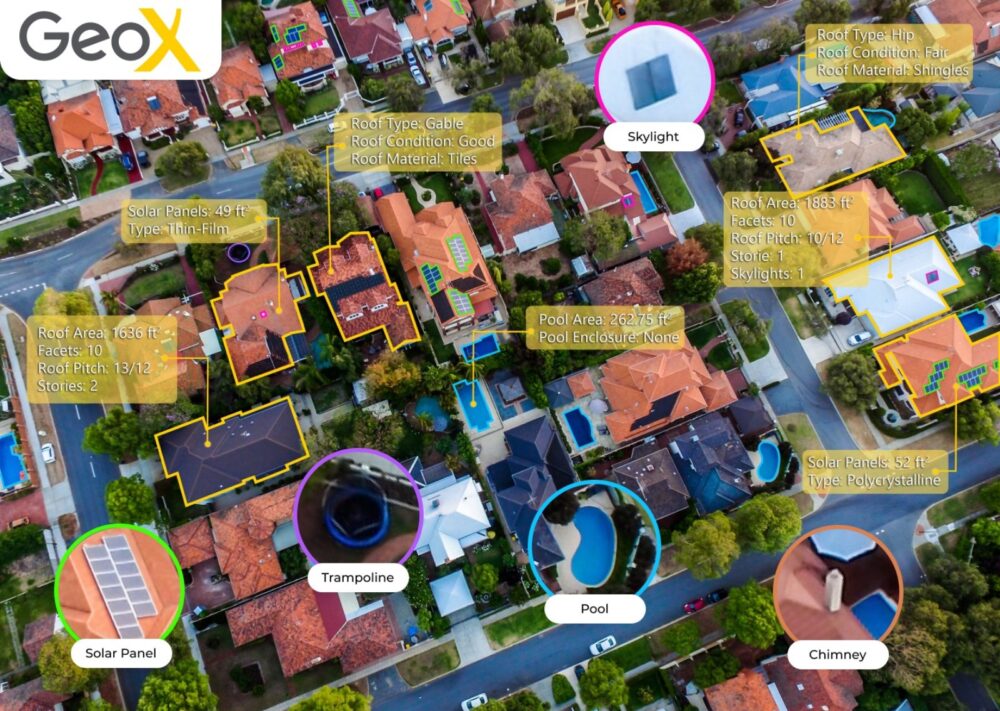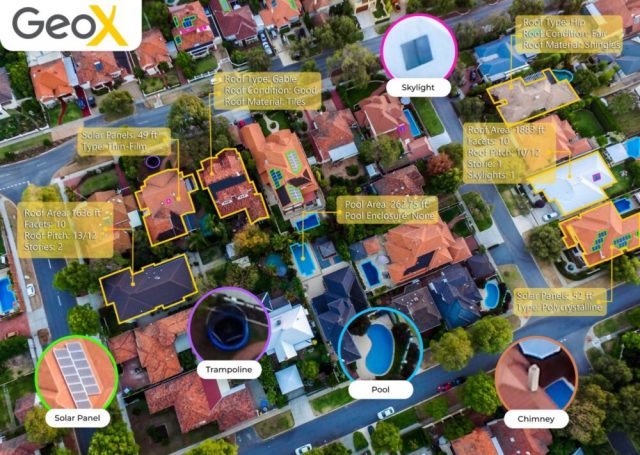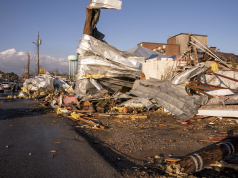
GeoX applies patented artificial intelligence analysis to create 3D maps from aerial photographs of commercial and residential properties taken by satellite, aircraft and drone.
The GeoX worldwide database covers 340 million properties, and its US database covers 160 million properties.
Clients on five continents are using GeoX’s service for purposes ranging from insurance assessment to real-estate management to city planning.
The US Federal Management Emergency Agency (FEMA) uses GeoX maps to evaluate damage after disasters.
The World Bank is using it to protect residents of Ghana in West Africa by identifying flood-prone housing. They can then take measures such as building dams and/or sending real-time alerts.
New York-based global analytics giant EXL is integrating GeoX data into underwriting services provided to the largest insurance companies in the United States, Europe and Australia to help them assess damage and detect attempts at fraud
GeoX AI-assisted mapping provides granular details about properties for insurance, management and planning purposes.
Australian government company Geoscape hired GeoX to map and analyze 18 million single-family homes for a variety of planning purposes, such as infrastructure supporting energy distribution and cellular networks.
Insurance companies use GeoX’s maps to structure differential premiums reflecting each property’s exact degree of risk – or suggest improvements to mitigate the risk and lower the premium.“We provide data and risk analysis on each property to help prevent disasters, and evidence to understand the reason for damage afterward,” said Izik Lavy, cofounder and chief executive officer of GeoX.
Automatic technology saves companies the expense of sending assessors to each home, a cost that is passed on to customers.
Because prevention is always preferable to dealing with damage, the information from GeoX points to specific actions to safeguard properties.
“If you live in an area of California vulnerable to wildfires, for example, you can cut away the brush and buy inexpensive sprays to protect your trees from catching fire,” said Lavy.
“If your roof is in bad condition, the insurance company may ask you to fix it before insuring you. It may be challenging for you to do that, but it’s to your advantage to make your property safer. Of course, by protecting your property you also protect your life.”
The GeoX system also allows insurers and real-estate managers to monitor buildings for signs of deterioration. It can even be used by real-estate developers to make wiser portfolio choices.
Risks are increasing
Lavy, a veteran of an IDF intelligence unit, founded GeoX in 2018 with Eli Lavie (CTO) and Guy Attar (VP business development).
They had noted the increased demand for risk assessments due to increasing extreme weather events including devastating hurricanes in America, unusual floods in Europe and China, and wildfires across the globe.
These disasters cost insurance companies tens of billions of dollars in claims.
“I saw that insurance carriers, in particular, suffered from lack of information, and I wanted to solve this pain point,” said Lavy.
“This also helps all of us, the end customers, because we will receive better service and be able to protect our property and understand our risks wherever we are.”
“Everyone has the same lack of information no matter where you are based.”
Using aerial imagery obtained by purchase or partnership, GeoX can identify every feature of a property including the number of stories, pitch of the roof, square footage and even the Jacuzzi in the backyard.
“We extract all the information from aerial imagery by leveraging AI and machine learning,” said Lavy. “This answers the need for stable information that will be similar in every place.”
GeoX employs 25 people, 15 of them at a development center in Ramat Gan, and the others on the two US coasts. Investors include the Shor-Tech Stock Exchange Partnership and the ICM Fund.
Produced in association with ISRAEL21c.
Recommended from our partners
The post Would Your Building Survive An Extreme Weather Event? appeared first on Zenger News.




